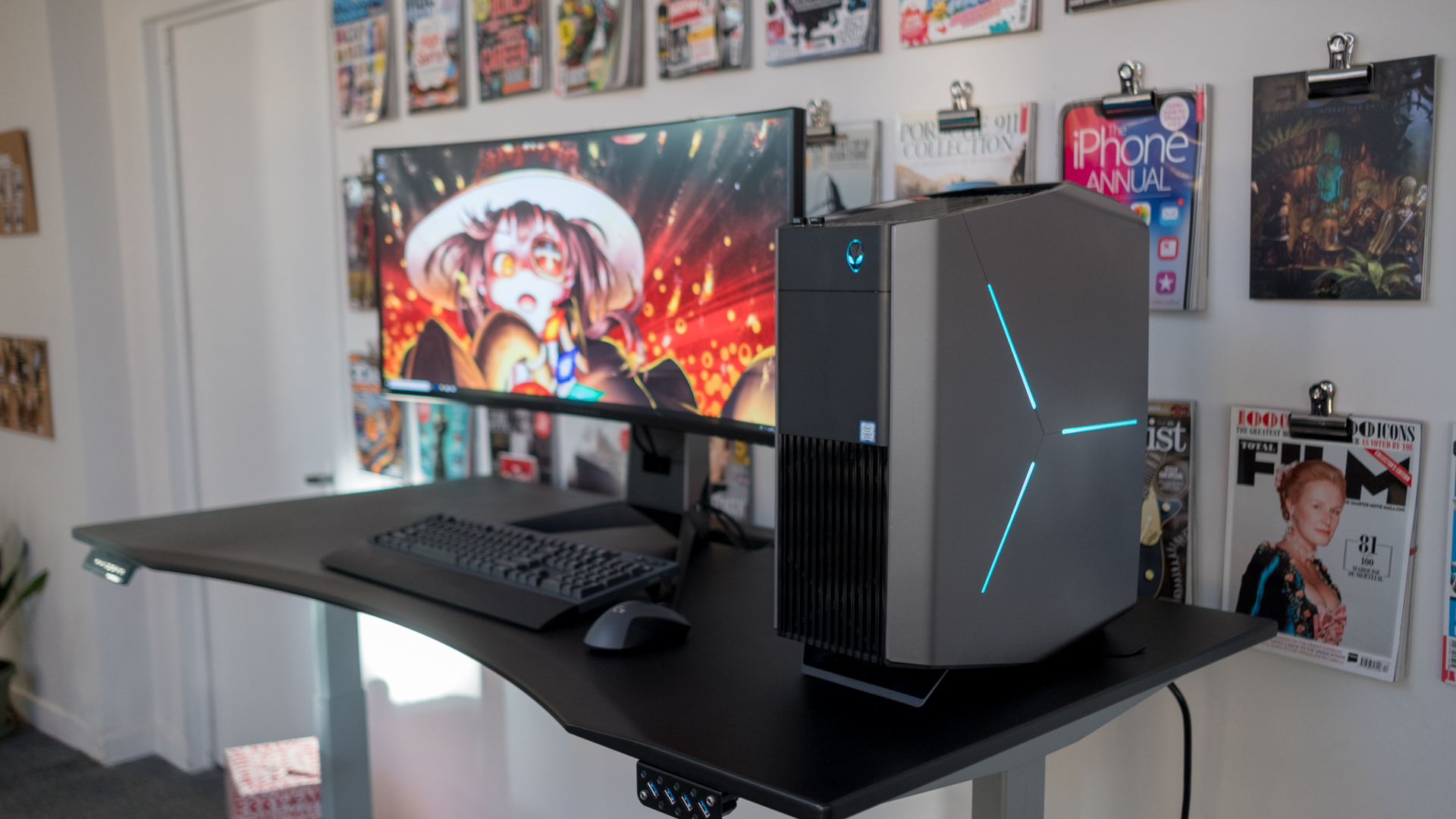TechRadar Verdict
Alienware’s most recent update to its Aurora line delivers even better gaming performance and that delightful tool-less design we now can’t live without.
Pros
- +
Plays games smooth as butter
- +
Attractive, not over-the-top design
- +
High scores for upgradability
Cons
- -
Chassis lid a bit finicky
- -
Noticeable fan sound
- -
Not the most affordable
Why you can trust TechRadar
There’s a difference between things being budget or a great value in that the former isn’t necessarily good quality while the latter means you might be paying a bit more money for something that boasts great quality. Such is the case for Alienware’s most recent update to its Aurora gaming desktop.
At $2,904 (£2,569, AU$3,749) for our review config, the Alienware Aurora R7 is not exactly the most affordable in the market. But with features like a killer, 6-core Intel Core processor, a high-end GPU that boasts frame buffer power, a plethora of ports that will let you establish your own little gaming village, and its tool-less design makes upgrading easy as playing with Legos, this rig definitely offers great value.
That’s raw power, convenience and flexibility we’d be happy paying more money for.
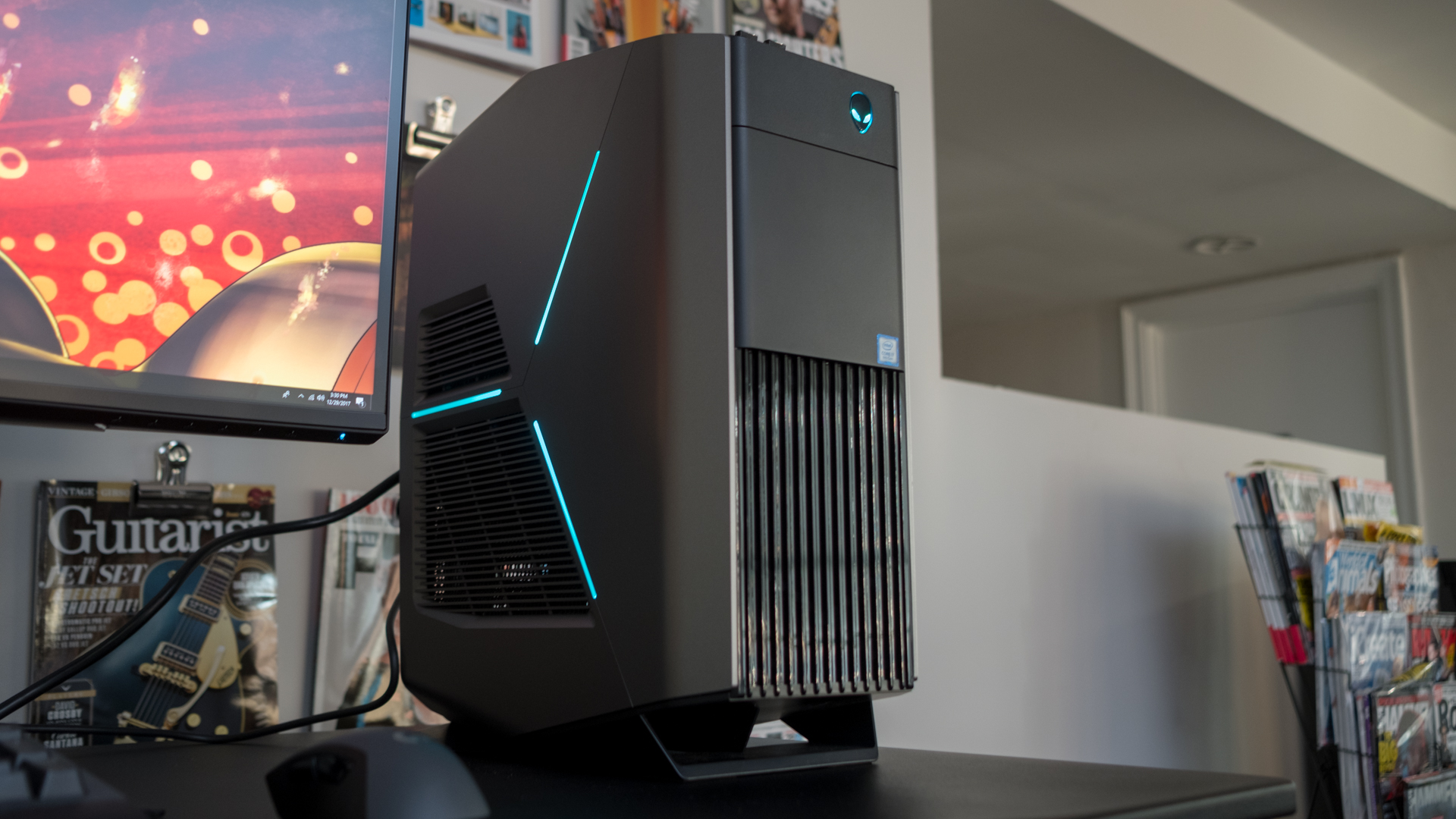
Here is the Alienware Aurora R7 configuration sent to TechRadar for review:
CPU: 3.7GHz Intel Core i7 8700K (hexa-core, 12MB Cache, up to 4.7GHz)
Graphics: Nvidia GeForce GTX 1080 Ti (11GB GDDR5X)
RAM: 32GB dual channel DDR4 (2666MHz)
Motherboard: Dell Proprietary (Intel Z370 chipset)
Power Supply: Alienware 850 Watt Multi-GPU Approved Power Supply with High Performance Liquid Cooling
Storage: 512GB M.2 PCIe NVMe SSD, 2TB HDD (7,200 rpm)
Ports (front): 1 x headphone, 1 x microphone, 1 x USB-C, 3 x USB 3.0
Ports (rear): 6 x USB 2.0, 4 x USB 3.0, 1 x USB-C, Rear L/P surround, Coaxial S/PDIF port, optical audio out, Ethernet, DisplayPort
Connectivity: Killer 1535 802.11ac 2x2 WiFi and Bluetooth 4.1
Operating system: Windows 10 Home 64-bit English
Camera: none
Weight: 32.67 pounds (14.81kg)
Size: 8.35 x 18.6 x 14.2 x inches (21.1 x 47.2 x 36.1cm: W x D x H)
Price and availability
Like its predecessors, the Alienware Aurora R7 comes in different configurations, the cheapest of which is at $999 (£949, AU$1,499). This most basic config, only about $150 more than the Aurora R6’s, which was furnished with the Intel Core i5 8400 processor, 8GB of DDR4-2666MHz RAM, the Nvidia GeForce GTX 1050 Ti GPU, and a 1TB hard drive.
Step up one config up for $1,329 (£1,099, AU$1,785) and you’re VR ready thanks to this configuration coming with a more powerful Nvidia GTX 1060 graphics card, plus twice as much memory.
Meanwhile, the priciest model, which will set you back $4,279 (£4,029, AU$6,619), is tricked out with the Intel Core i7 8700 CPU, 64GB of RAM, 1TB PCIe SSD, 2TB HDD and dual Nvidia GeForce GTX 1080 Ti with 11GB GDDR5X each. Besides the eight configurations you can choose from, you can also pick and choose your own specs and customize your desktop according to your gaming needs and demands.
Our own configuration, as seen to the right, costs $2,904 (£2,569, AU$3,749). The price tag might be on the higher end, but this machine is future-proof. It’s got high enough specs to essentially let you run just about any game you want at the highest settings without issue. A reasonable price for a total beast – that’s great value.
Sign up for breaking news, reviews, opinion, top tech deals, and more.
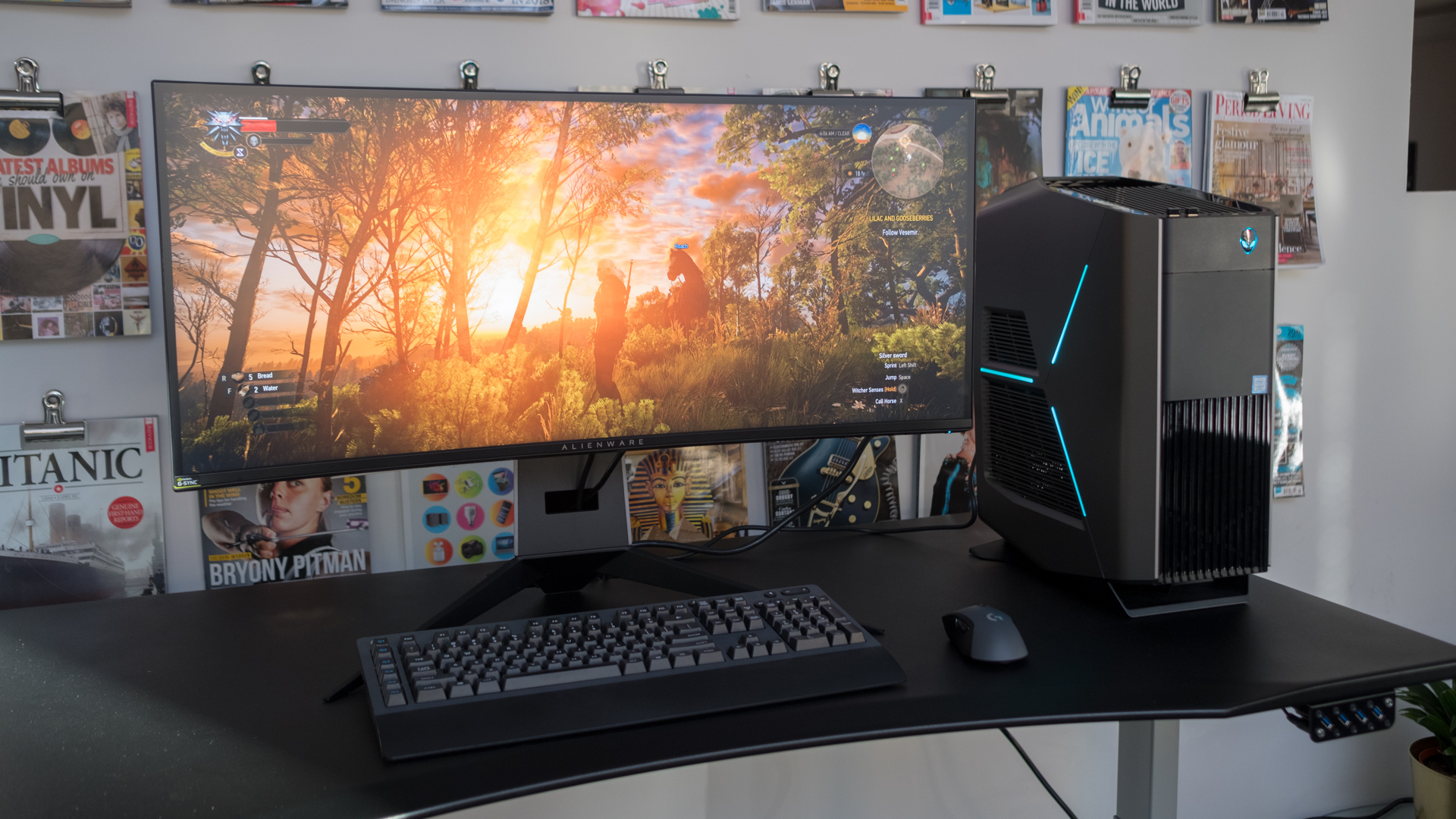

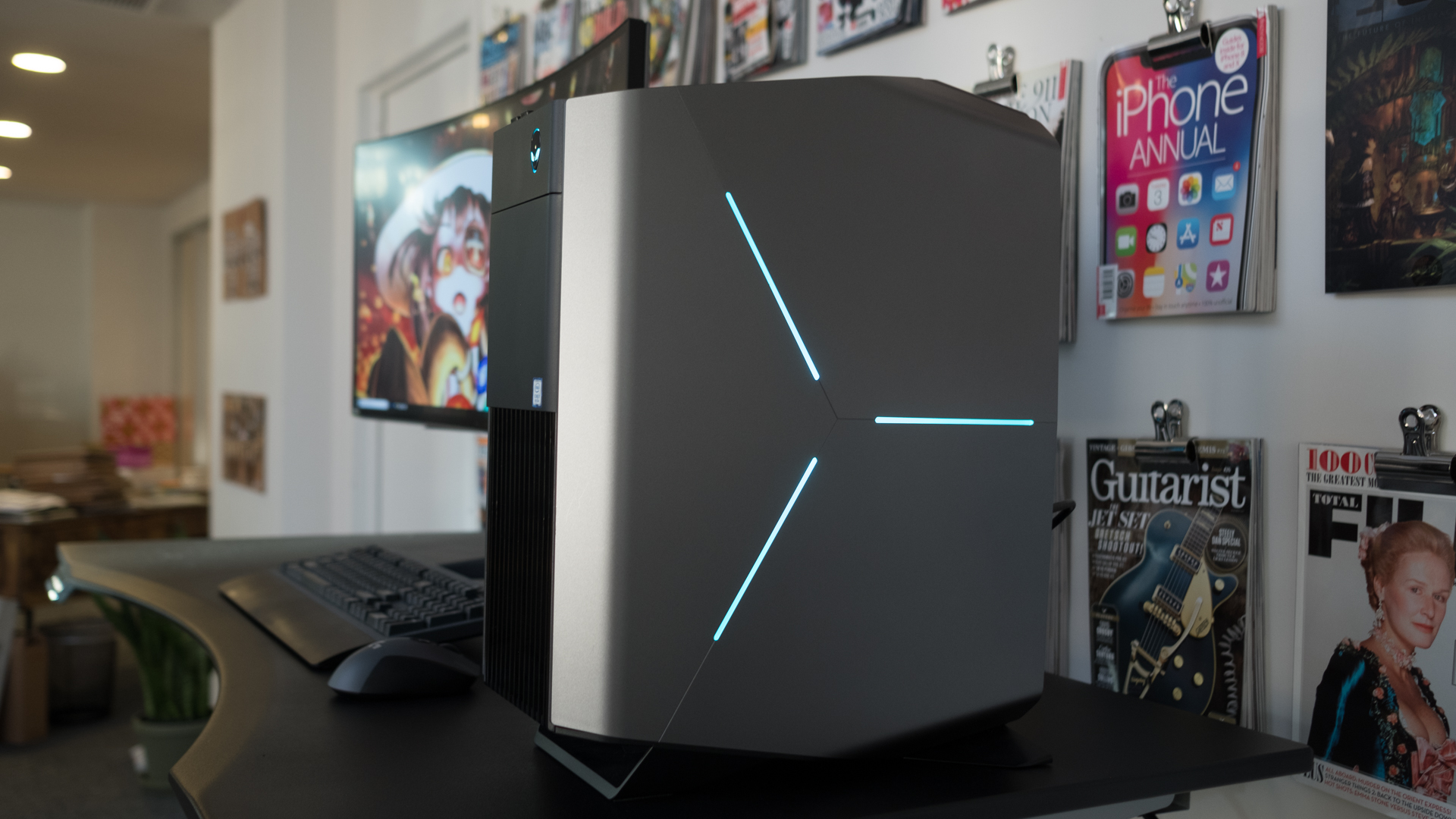
Design
Though not as tricked out as other gaming PCs, the Aurora R7 is definitely a good-looking machine. It’s got a more down-to-earth style than the Area-51 and simple yet customizable LED lighting on both sides and on the Alienware logo up front (that also serves as the power button).
At 18.6 x 14.2 x 8.35 inches (21.1 x 47.2 x 36.1cm: W x D x H), it’s not necessarily compact in design. But it isn’t big and bulky either. It does have some heft to it at 37.67 pounds (14.81kg), but it is easy to lug around thanks to the handle at the top. Large exhausts also along the top of the machine takes most of the internal space, complimented by a couple of pretty sizable intakes on the right side and at the front, giving it good airflow.
The best thing about its design, if not its portability, is its accessibility. The chassis features that tool-less, easily upgradable design we love. Taking the right-side lid off only requires a simple pull of the lever in the back, revealing the power supply mounted sideways on a panel attached to a hinge.
It might look complicated, but the only trick to it is undoing the two switches that this panel in place. From there, you can swing out the PSU back and forth effortlessly to reveal the rest of the hardware including the processor, graphics card, motherboard and memory. And on the back are three expansion slot covers that easily slip right off.
Securing the lid back on is a little tricky, but seeing how easily everything else is to handle, it’s a trade-off we can overlook.
Plus, it has oodles of ports. The top front has three USB 3.0 ports, a headphone port, a mic port, and a USB-C port. The back has six USB 2.0, four USD 3.0 and one USB-C ports as well as a DisplayPort, an Ethernet port, a Digital Optical Audio, and HDMI ports. This means flexibility when it comes to connecting a plethora of devices.
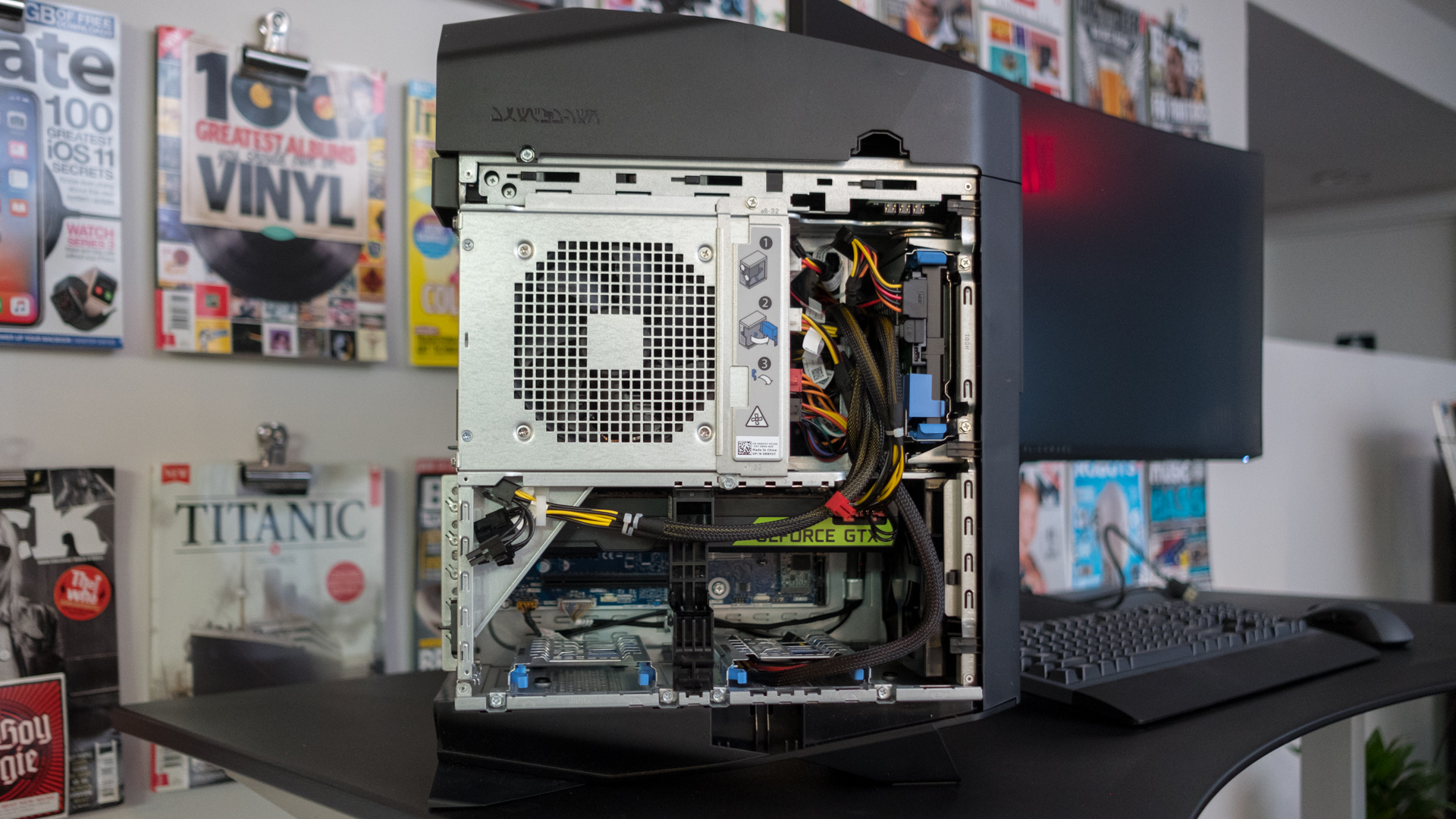
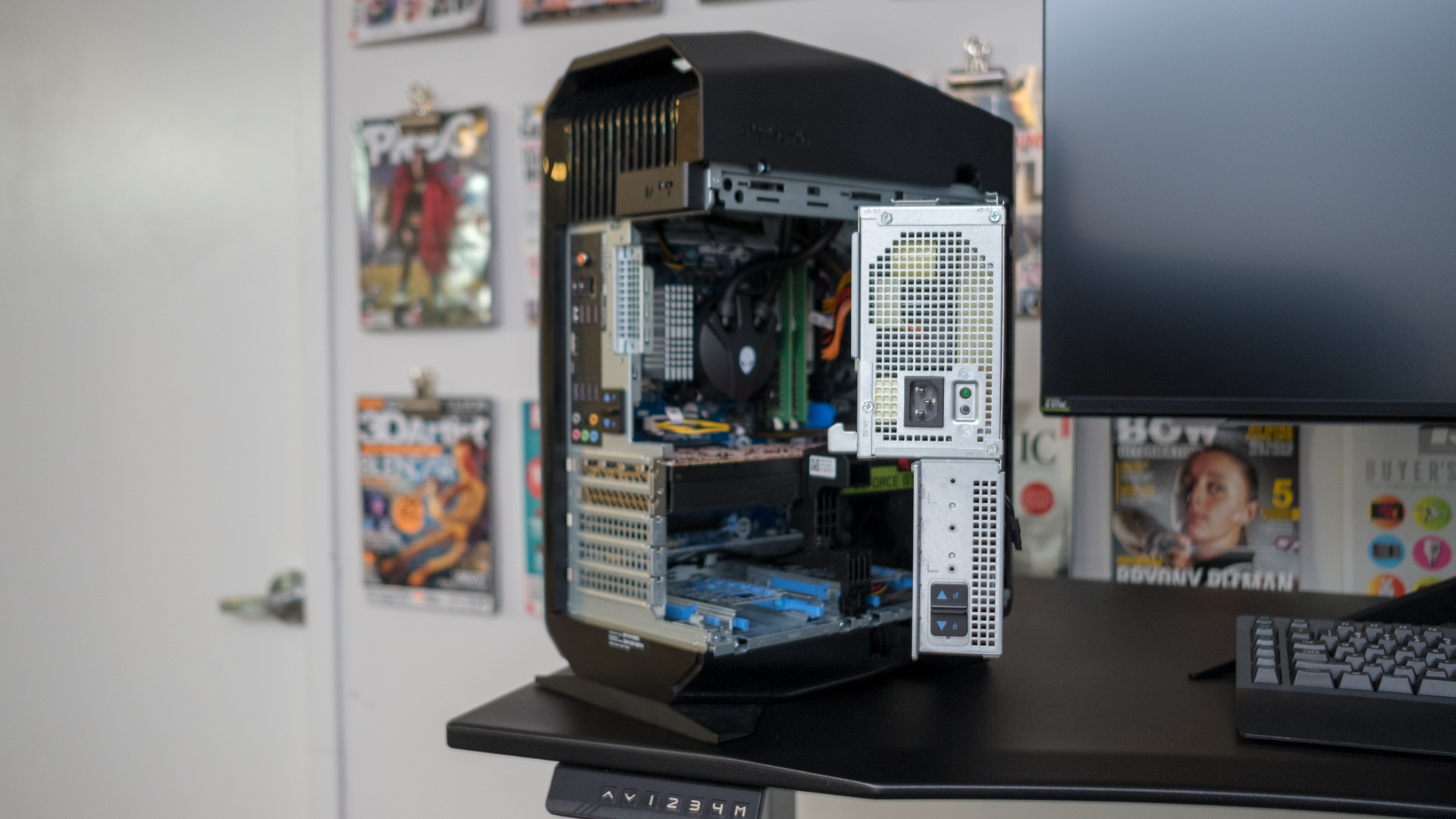

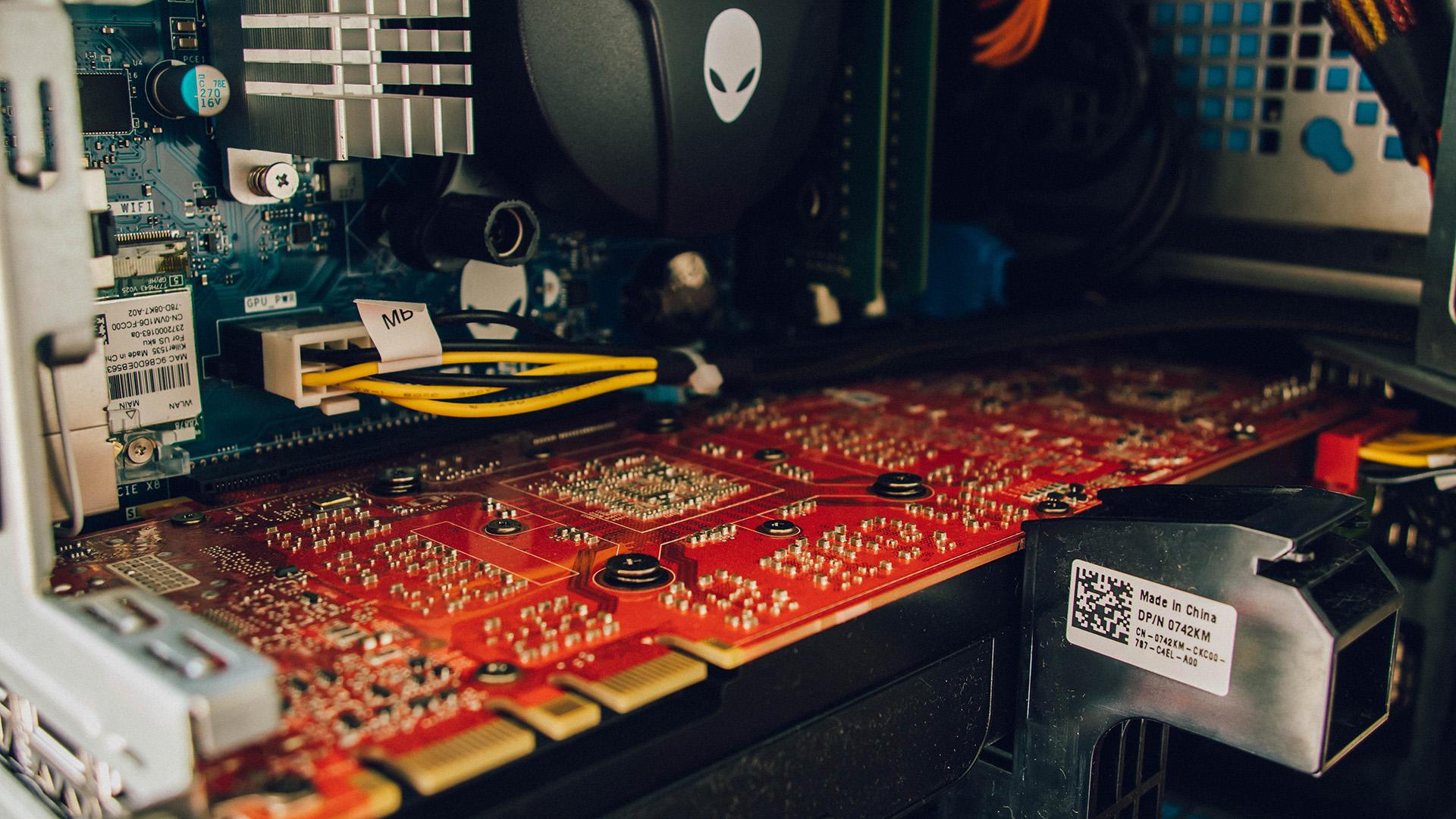

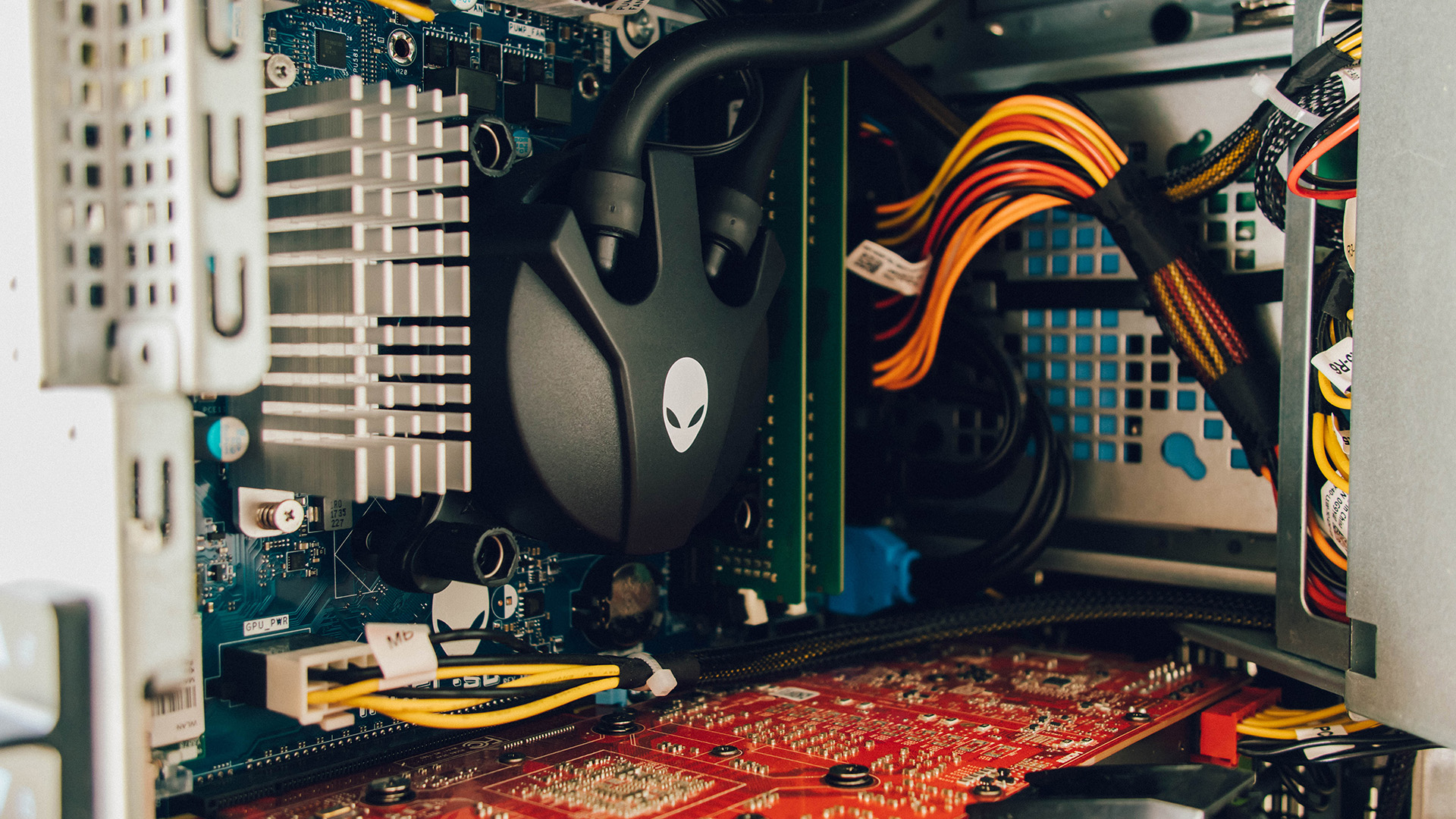

Upgradability
Alienware Aurora R7’s chassis is designed for upgradability. Its reasonable size means plenty of space for new and extra components, especially those important for gaming. Additionally, its general layout and its tool-less design allows for maximum accessibility. This means that replacing and/or upgrading parts is a breeze, so much so that even newbies can do it.
The hard drive, sits just beneath the the power supply, is easily removable, replaceable and upgradeable to up to 2TB. Below the pre-installed GeForce graphics card in our review unit are two expansion slots on the motherboard—a short PCI-E X4 slot and a second PCI-E X16 slot (the first one being used by the GPU). These slots allow for an additional GPU, sound card and other additional components.
There are also four RAM slots on the left side of the multi-core processor. Our unit comes with two sticks of 8GB sticks of DDR4 RAM, leaving two more slots to upgrade to up to 32GB – or just start from scratch for a full 64GB of RAM. Lastly, there are two 2.5-inch drive bays at the bottom for secondary drives.

Performance
With its excellent processor, top of the line GPU and sizeable RAM, it seems like the Aurora R7 can do no wrong. In fact, all the components are so solid in our review configuration that it’s hard to pinpoint individual faults, if there were any.
At the heart of it is, of course, the Intel Core i7 8700K. This hexa-core CPU is a big step up from all the quad-core processors that powered previous itterations of the Aurora. Alienware claims the flagship chip of the 8th generation is said to allow the R7 to perform up to 25% better than its predecessor.
It’s also an unlocked CPU, which allows overclocking for even faster speeds – though honestly, it didn’t seem to need a reason for it. The R7 cuts through demanding games like butter and handles regular computer functions effortlessly.
There’s also the GeForce GTX 1080 Ti, Nvidia’s flagship GPU that the company promises to deliver up to 3x increase in performance. Its 11GB GDDR5X of video memory helps the frame buffer deliver faster loading while eliminating any noticeable latency.
Here’s a good example of this GPU’s capability: the first chamber of Doom where you’re swarmed by demons from all directions is a situation where you might expect frame rate and texture drops from a less powerful machine. But the R7 handled it like a pro, staying sharp, rendering frames fast enough and keeping up with our frantic, massive POV movements.
When playing Call of Duty, while this reviewer had a bit of trouble keeping up with what was going on, this beast handled the in-game physics beautifully.
And we can’t forget the 32GB of dual channel DDR4 RAM that our review unit comes with. There aren’t that many games right now that need that much system memory, but it’s good to know that if we want to play one, it can handle it.
Essentially, because the Alienware Aurora R7 can take whatever you throw at it—Doom, Call of Duty: World War II, Middle Earth: Shadows of War – every game is rendered in gorgeous detail with a steady, plodding frame rate that doesn’t quit. Couple that with a kickass computer speaker system connected through the digital optical audio, and you’re in business.

Here’s how the Alienware Aurora R7 performed in our suite of benchmark tests:
3DMark: Sky Diver: 47,362; Fire Strike: 20,729; Time Spy: 8,802
Cinebench CPU: 1,390 points; Graphics: 141 fps
GeekBench: 4,977 (single-core); 26,275 (multi-core)
PCMark 8 (Home Test): 4,905 points
Total War: Warhammer II (1080p, Ultra): 72 fps; (1080p, Low): 158 fps
Middle-Earth: Shadow of War (1080p, Ultra): 110 fps; (1080p, Low): 179 fps
As expected, Aurora R7 fared considerably better in the benchmark tests than the Aurora R6 and the VR-ready MSI Infinite A. It scored bigger on the GPU-leaning 3DMark Sky Diver and Time Spy tests as well as the Cinebench and GeekBench tests for the CPU.
The Sky Diver, Fire Strike and Time Spy tests did push it hard and you could hear the fan going – though not overly noisy to be deemed annoying, just enough so that it’s definitely noticeable especially when you don’t have your speakers or headsets on. Still, it did swimmingly at 47,362, 20,729 and 8,802 points respectively.
It also scored competitively with Chillblast’s Fusion Spectrum Ryzen 7, which features the octa-core AMD Ryzen 7 1800X and the same GPU. These results say a lot, considering that these three are some of the best in the market today.
Additionally, we ran it with the Total War: Warhammer II benchmark that proved just how powerful its i7 8700K 6-core processor is. On this heavily CPU leaning game, which essentially controls hundreds of different “characters” and has all these elements acting independently, it surpassed 60fps on ultra settings and well above that at 146.6fps on the lowest.
We also tested it with Middle Earth: Shadow of War. Though this is obviously not the best-looking game or the most CPU intensive, it’s still worth noting that the R7 achieve excellent results at 110 fps on ultra with reasonable loading times and crisp textures.
On top of those, we played Doom, Call of Duty: World War II and Nier Automata, all of which it handled beautifully.

Final verdict
When we’re reviewing gear, sometimes there’s a tiny bit of guilt, albeit unnecessary, when we’re raving about a particular product because obviously nothing is perfect. But honestly, you’d be hard-pressed hard to find fault in the Alienware Aurora R7.
This machine is gorgeous in and out, not necessarily in gaming-type aesthetic—it doesn’t come with all the bells and whistles of the Chillblast Fusion Spectrum or the Darth Vader meets Transformers look of the MSI Aegis 3 – but in its power, functionality and expandability.
Aurora R7 boasts a more approachable look, made for gaming but not too aggressive to put off some potential buyers. It’s also got a highly evolved interior design so you can add, switch and upgrade components without needing so much as a screwdriver. Beyond that, this rig runs games beautifully with no noticeable frame rate drops, crisp textures, and no latency issues even at the highest settings. And with such top-of-the-line parts, it’s also future-proof.
Admittedly, it’s not the cheapest gaming desktop available. What it does offer is great value, and that’s what matters more. Plus, if you’re really on a tighter budget, there are more affordable configurations.

Michelle Rae Uy is the former Computing Reviews and Buying Guides Editor at TechRadar. She's a Los Angeles-based tech, travel and lifestyle writer covering a wide range of topics, from computing to the latest in green commutes to the best hiking trails. She's an ambivert who enjoys communing with nature and traveling for months at a time just as much as watching movies and playing sim games at home. That also means that she has a lot more avenues to explore in terms of understanding how tech can improve the different aspects of our lives.
